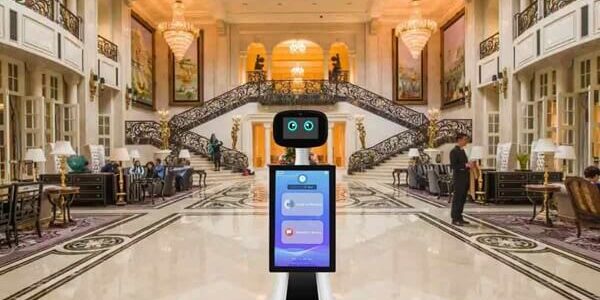In the hospitality and service industry, delivering a seamless and personalized guest experience is key to building loyalty and satisfaction. With the advent of advanced technologies like voice recognition, service robots are revolutionizing the way guests interact with hotels and restaurants.
Gone are the days of static information desks or printed brochures. Today’s service robots can engage guests in natural conversations, understand their preferences, and recommend the perfect dining options—all in real-time. This not only enhances the guest experience but also sets a new standard for customer service in the hospitality sector.
In this blog, we’ll explore how service robots leverage voice recognition technology to recommend restaurants, the step-by-step process behind these interactions, and the benefits they bring to both businesses and customers.
How Service Robots Use Voice Recognition to Recommend Restaurants
1. Voice Recognition and Understanding
Service robots utilize Automatic Speech Recognition (ASR) to convert guest speech into text. By identifying keywords such as “Italian restaurant” or “vegan options,” robots accurately grasp the guest’s needs. For instance, a guest asking, “Can you recommend a nearby Italian restaurant?” triggers the robot to focus on the keyword “Italian restaurant.”
2. Semantic Analysis
Once the speech is converted to text, the robot employs Natural Language Processing (NLP) to analyze the guest’s preferences. This includes understanding dietary preferences, budget constraints, or desired dining times, enabling the robot to extract actionable information for tailored recommendations.
3. Database Query
Robots then query their internal or external databases to find relevant options. These databases include detailed information on restaurants, such as cuisines offered, locations, menus, ratings, and operating hours. This ensures that the recommendations are accurate and up-to-date.
4. Personalized Recommendations
Based on the guest’s preferences and the database search results, robots provide personalized dining suggestions. For instance, if a guest prefers vegan food, the robot might recommend nearby vegan-friendly restaurants, complete with details about their signature dishes and customer reviews.
5. Follow-Up Interactions and Reservations
After suggesting options, robots can engage in follow-up interactions, such as asking if the guest would like to book a table. By integrating with online reservation systems, robots can complete the booking process instantly, offering guests a hassle-free experience.
6. Feedback Collection and Learning
Post-interaction, robots collect feedback from guests to improve their recommendation algorithms. By analyzing feedback, they learn about preferences and refine their future suggestions, making their service even more personalized over time.
Conclusion
The integration of voice recognition technology into service robots is transforming the hospitality industry by providing highly efficient, accurate, and personalized restaurant recommendations. These robots not only streamline guest interactions but also enhance the overall customer experience by offering a modern, tech-driven approach to dining suggestions.
At CPJ ROBOT, we specialize in the development and customization of service robots equipped with advanced AI capabilities. Our solutions are tailored for various applications, including museums, schools, supermarkets, airports, and hotels, ensuring businesses stay ahead in delivering exceptional guest services.
Embrace the future of hospitality by integrating voice-recognition-enabled service robots into your operations—delivering unparalleled convenience and satisfaction to your guests.






